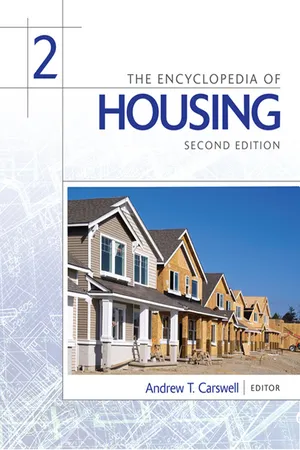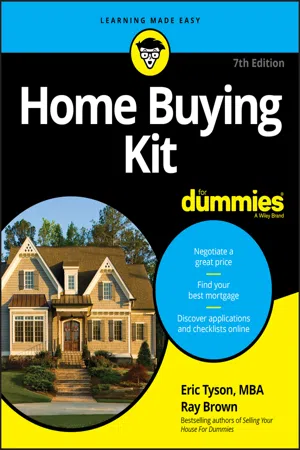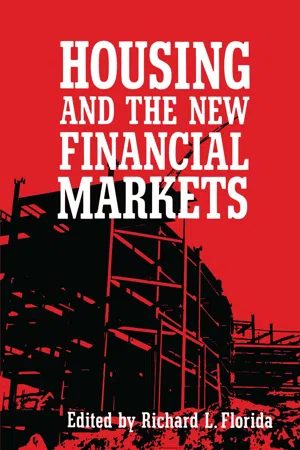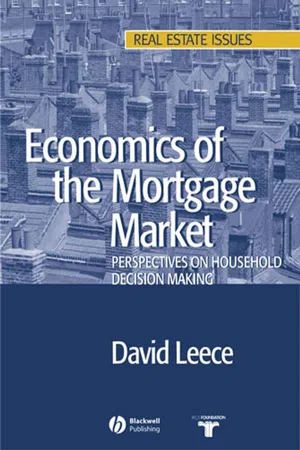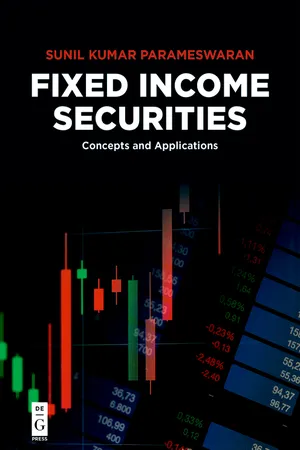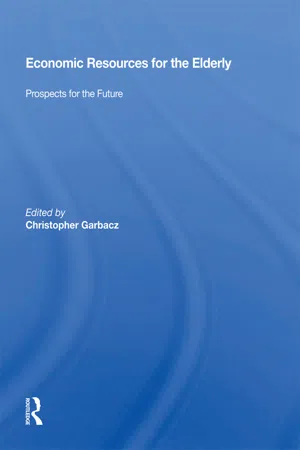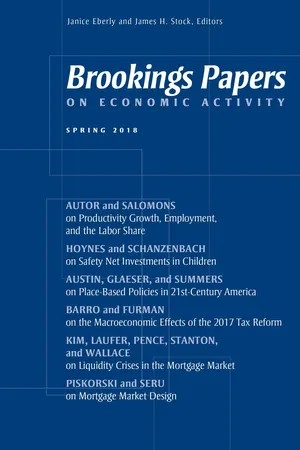Economics
Adjustable Rate Mortgage
An Adjustable Rate Mortgage (ARM) is a type of home loan with an interest rate that can change periodically. Typically, the initial interest rate is lower than that of a fixed-rate mortgage, but it can fluctuate based on market conditions. This means that the borrower's monthly payments may increase or decrease over time, depending on the terms of the loan.
Written by Perlego with AI-assistance
Related key terms
1 of 5
11 Key excerpts on "Adjustable Rate Mortgage"
- eBook - ePub
- Andrew T. Carswell, Andrew Carswell(Authors)
- 2012(Publication Date)
- SAGE Publications, Inc(Publisher)
24 CFR 203.45.Adjustable Rate Mortgage (ARM), Section 251As its name suggests, an Adjustable Rate Mortgage (ARM) is called “adjustable” because the interest rate adjusts up or down depending on the rise and fall of interest rates in the market. As the interest rate is adjusted, the monthly payment is also adjusted. The initial interest rate, discount points, and margin are negotiated by the borrower and lender. Lenders are obligated to disclose all aspects of the FHA-insured ARM loan at the time of the borrower’s application. Borrowers for owner-occupied properties are eligible for the FHA-insured ARM, and applications are handled only by HUD-approved lenders.Under the FHA-insured ARM, periodic adjustment to the interest rate is based on the 1-Year Treasury Constant Maturities Index. Borrowers must be informed in advance of any adjustment to the payment. Initial interest rates may be fixed for a period of time—1, 3, 5, 7, or 10 years. After the 1- or 3-year fixed period, interest rates may not change more than 1% per year, nor may they change more than 5% over the life of the loan. For 5-year, 7-year, and 10-year fixed ARM, interest rates may adjust up to 2% annually with a 6% lifetime maximum. Regulations are at 24 CFR, 203.49.Home Equity Conversion Mortgage (HECM), Section 255Borrowers who are over age 62 may draw equity from their homes with a “reverse mortgage.” This program provides mortgage insurance and regulations that reduce lenders’ risk and provide assurances for borrowers. The conversion of home equity into cash can be as a lump sum, a stream of payments, a line of credit, or a combination of these. Each withdrawal adds to the debt, but repayment is not made until the borrower dies, moves away, or sells the home. The interest rate is adjustable, and the equity available is determined in advance based on the expected interest rate and the costs of the loan that will be charged against the equity. When the loan is due and payable, the borrower or the borrower’s heirs owe no more than the value of the property. If the mortgage balance is lower than the value, the borrower or the borrower’s heirs keep the difference. If the mortgage balance is higher than the value, the lender’s loss is covered by the FHA-HECM insurance program. Eligible borrowers must be at least 62 years of age and occupy the property as the principal residence. Preexisting liens must be small enough to be satisfied by a HECM loan advance at settlement. - No longer available |Learn more
- Eric Tyson, Ray Brown(Authors)
- 2020(Publication Date)
- For Dummies(Publisher)
102 PART 2 Financing 101 On the other hand, adjustable-rate mortgages (ARMs for short) have an interest rate that varies (or adjusts ). The interest rate on an ARM typically adjusts every 6 to 12 months, but it may change as frequently as every month. As we discuss later in this chapter, the interest rate on an ARM is primarily deter -mined by what’s happening overall to interest rates. When interest rates are gen -erally on the rise, odds are that your ARM will experience increasing rates, thus increasing the size of your mortgage payment. Conversely, when interest rates fall, ARM interest rates and payments generally fall. If you like change, you may think that adjustable-rate mortgages sound good. Change is what makes life interesting, you say. Please read on, because even if you believe that variety is the spice of life, you may not like the financial variety and spice of adjustables! Looking at hybrid loans If only the world were so simple that only pure fixed-rate and pure adjustable-rate loans were available. But one of the rewards of living in a capitalistic society is that you often have a wide array of choices. Enter hybrid loans (or what lenders some -times call intermediate ARMs ). Such loans start out like a fixed-rate loan — the initial rate may be fixed for three, five, seven, or even ten years (often called 3/1, 5/1, 7/1, or 10/1 ARMs) — and then the loan converts to an ARM, usually adjusting every 12 months thereafter. Some hybrid loans adjust more frequently or, con -versely, may only have one adjustment. If you expect to keep your loan less than ten years, you may find 7/1 or 10/1 ARMs attractive. They offer greater stability than the shorter term ARMs as well as gen -erally lower initial interest rates than 30-year, fixed-rate mortgages. However, if you don’t pay off your 7/1 or 10/1 while the loan interest rate is fixed, remember that your interest rate and loan payments may go up a lot when the ARM adjusts. - eBook - ePub
Mind Your Own Mortgage
The Wise Homeowner's Guide to Choosing, Managing, and Paying Off Your Mortgage
- Robert Bernabe, Robert J. Bernabé(Authors)
- 2010(Publication Date)
- Thomas Nelson(Publisher)
A fixed-rate mortgage carries an interest rate that remains the same for the entire term of the mortgage; it is generally offered for fifteen, twenty-, twenty-five-, thirty-, and forty-year loan terms. The shorter the term of the fixed-rate mortgage, the better the price will be and the larger the payment will become (notice how price and payment are inversely related).Adjustable-Rate Mortgages (ARMs)An adjustable-rate mortgage carries an interest rate that changes over the life of the loan, at predetermined intervals based upon a rate index. The initial mortgage payment, and all subsequent changes to the mortgage payment, are calculated based upon the payment necessary to pay the loan in full from the date of the interest-rate change to the maturity date of the mortgage. The most important features of an adjustable-rate mortgage are as follows:• Initial interest rate: the rate that is used for the introductory period of the loan (commonly referred to as the start rate). • The index rate: the base rate to which the margin is added to arrive at the interest rate. • The margin: the amount that is added to the base rate to arrive at the interest rate. • Adjustment period: the length of time between the dates on which the interest rate is changed. • Interest rate caps: the maximum increase or decrease to the interest rate on an interest-rate adjustment date. • Lifetime interest rate cap: the maximum rate that is allowed under the mortgage.The most common type of adjustable-rate mortgage used by consumers in recent years is the hybrid adjustable-rate mortgage. These loans carry a fixed rate for an introductory period and are adjustable thereafter. The most common introductory periods are for one, three, or five years, but seven and ten years are also used. These loans are referred to as 1/1 ARMs, 3/1 ARMs, 5/1 ARMs, and so forth.The shorter the introductory period, the lower the introductory rate (assuming normal market conditions). For example, a 3/1 ARM will have a fixed rate good for the first three years that is lower than the fixed rate for the first five years on a 5/1 ARM. Once the introductory period is over, however, both of these loans would be subject to similar adjustable rates and increases. - eBook - ePub
- Richard L. Florida(Author)
- 2019(Publication Date)
- Routledge(Publisher)
5 The Federal National Mortgage Association announced on June 25, 1981, that it would make commitments to purchase eight types of adjustable-rate mortgages based on five different indices beginning in late July. The program announced by the Federal Home Loan Mortgage Corporation in late May was more limited.Reprinted from Economic Perspectives, Federal Reserve Bank of Chicago , July-August 1981.Passage contains an image
Gene D. Sullivan and R. Mark Rogers20The Adjustable Mortgage Loan: Benefits to the Consumer and to the Housing Industry
Introduction
Adjustable Rate Mortgage loans (AMLs)1 differ from fixed rate loans in that the interest rate charged is not predetermined over the life of the loan—the rate varies according to an index of one of various possible interest rates or “costs of funds” for S&Ls. The monthly payments can go up or down depending on whether the index goes up or down. Of course, this sounds risky—fortunately, the borrower can count on certain protective guidelines for AMLs which are set by the Federal Home Loan Bank Board (FHLBB) for federal S&Ls. These guidelines are very flexible— AML plans can vary considerably from thrift to thrift. The FHLBB allows for AML options in which interest rate adjustments can be accommodated through changes in payment, principal outstanding, the length of the loan, or any combination of the above.Lending institutions are adopting AMLs in order to lower their risk of losses on mortgage loans attributable to changing interest rates—with the result that more mortgage money is supplied or made available during periods of rate instability. Lenders will make loans only if returns on loans offer a profitable margin above the interest costs paid to depositors. The AMLs can help thrifts maintain the necessary margin above cost to make loanable funds available. AMLs also can help some home buyers who do not or cannot enter the housing market because either they are (1) waiting for lower mortgage rates and/or (2) cannot afford high monthly interest and amortization charges. - Robert Brechner, Geroge Bergeman(Authors)
- 2019(Publication Date)
- Cengage Learning EMEA(Publisher)
These indexes usually go up and down with the general movement of interest rates in the nation’s economy. When the index goes up, so does the mortgage rate, resulting in higher monthly payments. When the index goes down, the mortgage rate may or may not go down. To calculate the interest rate on an ARM, lenders add a few points called the lender’s margin or spread to the index rate. The amount of the margin can differ among lenders and can make a significant difference in the amount of interest paid over the life of a loan. Calculated ARM interest rate = Index rate + Lender’s margin The calculated or initial ARM interest rate is usually the rate to which all future adjust-ments and caps apply, although this rate may be discounted by the lender during the first payment period to attract and qualify more potential borrowers. This low initial interest rate, sometimes known as a teaser rate , is one of the main appeals of the ARM; however, without some protection from rapidly rising interest rates, borrowers might be put in a position of not 14-5 adjustment period The amount of time between one rate change and the next on an adjustable-rate mortgage; generally one, two, or three years. index rate The economic index to which the interest rate on an adjustable-rate mortgage is tied. lender’s margin or spread The percentage points added to an index rate to get the interest rate of an adjustable-rate mortgage. calculated or initial ARM interest rate The interest rate of an adjustable-rate mortgage to which all future adjustments and caps apply. teaser rate A discounted interest rate for the first adjustment period of an adjustable-rate mortgage that is below the current market rate of interest. Copyright 2020 Cengage Learning. All Rights Reserved. May not be copied, scanned, or duplicated, in whole or in part. Due to electronic rights, some third party content may be suppressed from the eBook and/or eChapter(s).- eBook - PDF
Economics of the Mortgage Market
Perspectives on Household Decision Making
- David Leece(Author)
- 2008(Publication Date)
- Wiley-Blackwell(Publisher)
This will suit a borrower who is impatient and desires lower initial payments. 136 Economics of the Mortgage Market However, this payment profile is purchased at the risk of a high draw from the interest rate distribution in the second period. There will be some circumstances where the ARM provides a desireable combination of gra-dient on the payment profile, and acceptable interest rate risk. Hence the rationale for the existence and sometimes prevalence of the Adjustable Rate Mortgage. It is useful to look briefly at the loan rate function, as it is suggestive of some other important characteristics of the mortgage market. For example, some empirical work for the United Kingdom has suggested that lags in pricing adjustment can influence borrowers choices. Brueckner (1993) presents a nice example of a linear loan rate function, given in expression (7.3). The term R ( r ) is the loan rate function where r is the cost of funds, a is a constant indicating a given mark-up and b is a param-eter determining the impact of changes in the cost of funds. In the case of the ARM the parameter value is b ¼ 1 while for the FRM b ¼ 0. 4 While noting that this linear form is mathematically restrictive, Brueckner argues that it is probably a realistic representation of pricing. Interestingly, the VRM in the UK has not always responded quickly to changes in the cost of funds ( b < 1). The recent introduction of tracker mortgages means that there are now mortgage instruments where b ¼ 1. Lags in interest rate adjustment are not insignificant and mean that vari-able rate debt can sometimes behave like fixed rate mortgages (see Miles 1992; Leece 2000a). The discussion of credit rationing in Chapter 5 noted how lags in interest rate adjustment reflect the structure of competition in the lending market (Heffernan, 1997). - eBook - ePub
Fixed Income Securities
Concepts and Applications
- Sunil Kumar Parameswaran(Author)
- 2019(Publication Date)
- De Gruyter(Publisher)
Most lenders charge a lower interest rate for an ARM at the outset, as compared to a fixed-rate mortgage. Thus the initial financial burden on the new homeowner is lower. If rates do not change much, or decline sharply, the borrower stands to benefit as compared to a party who has availed of a fixed rate mortgage. However, the flip side is that the interest rates may rise, and the borrower then has to pay higher periodic installments.The interest rate and consequently the monthly payment of an ARM resets periodically. The rate may change every month, quarter, year, or even longer periods. The time period between rate changes is called the adjustment period. For instance, an ARM may have an adjustment period of 12 months. That is, the rate is reset once per annum.Variations on the ARM Structure
Let’s now discuss some alternatives to a simple ARM structure.Hybrid ARMs: An N/1 ARM is a hybrid of a fixed rate and a variable rate mortgage loan. The rate remains fixed for the first N years, after which the loan assumes the feature of an Adjustable Rate Mortgage. For instance, a 5/1 ARM means that the rate is fixed for the first five years. Thereafter the rate adjusts annually until the loan is paid off. A 30 mortgage loan may also be described as an n/30-n ARM, for instance a 4/26 ARM. This means that the rate remains fixed for the first four years, after which it becomes adjustable. Once the fixed rate period expires, the rate may be adjusted annually or at times even more frequently.Interest-only or I-O ARMs: In the case of such an ARM, the borrower pays only interest for the first few years. This reduces the cash flow burden on the borrower. At the end of the initial period, the monthly payments increase, even if interest rates do not change, because the entire principal has to be repaid over a truncated period. The interest rate may or may not adjust during the initial (I-O) period. The longer the duration of the I-O period, the higher the periodic payment is after it ends, because the loan has to be repaid during a shorter period. Example 8.4 - eBook - PDF
Economic Resources For The Elderly
Prospects For The Future
- Christopher Garbacz(Author)
- 2019(Publication Date)
- Routledge(Publisher)
Property value inflation continues to represent the maximum increase in monthly payme~t, and consequently to prevent the run-away payment increases of the type shown in Table 12.1. A very important question is whether the ARM can continue to be adjustable in terms of interest rate. The answer is yes. There is nothing in the manipulation of the monthly payments that prevents or discourages the use of a variable or adjustable debit interest rate.10 This would (along with any revised schedule of payments) alter the loan balance schedule. It is tempting to want to view this constrained ARM 228 as a kind of Price Level Adjusted Mortgage (PLAM} • This instrument certainly is one that adjusts payments to price conditions, but it is substantially different from a PLAM in one regard. A PLAM adjusts payments in such a way that the mortgage ultimately is fully amortized at maturity. A Reverse PLAM would adjust payments in a way such as to reach a target loan balance, or LTV. This constrained ARM does not achieve such a target loan balance, as that objective is sacrificed in favor of a monthly payments objective. If the words had not been already used to describe a particular PLAM (Kaplan, Smith and Associates, Inc., 1980), this instrument might be called a price level adjusted mortgage, but given the history of that phrase, it is inapplicable. Two ARMS are displayed in Table 12.2 --one is an unconstrained version and the other is based on the constraints that have been discussed. For simplicity, this example has a single rollover point. The payments for the first five years are the same for the two instru-ments. Payments rise at a six percent annual graduation rate. If this rate of increase continued, and if the mortgage rate held at 12 percent, the final loan balance would be $50,000. In year six, though, things change. At the start of year six the instrument is rolled over and the new interest rate is 13 percent. - eBook - ePub
Managing Financial Institutions
Markets and Sustainable Finance
- Elizabeth Cooperman(Author)
- 2016(Publication Date)
- Routledge(Publisher)
The amount a homeowner can borrow for a second mortgage loan is limited to the amount of equity they have accumulated in their homes. A home equity loan, however, is a revolving line of credit against which a homeowner can borrow with the loan maximum allowed as 70−85% of the equity the borrower has in the home. Since the lender has the security of a junior lien on the borrower’s home in the event of default, HELs are offered at lower interest rates than credit card or unsecured consumer loans. Interest rates are variable (sometimes changing monthly) and are often tied to movements in base rates such as a prime rate or T-bill rate index. Repayment schedules are more flexible than second mortgages, and the borrower may often draw on unused but approved credit limits by writing a check. In the United States, the Competitive Equality Banking Act (CEBA) of 1987 mandates that HELs must have lifetime interest rate caps. The Home Equity Loan Consumer Protection Act of 1988 specifies rigid disclosure rules and restricts the right of creditors to charge loan terms after a home equity loan has been approved. Special Considerations of Mortgage Loans Adjustable Rate Mortgages (ARMs) There are many special regulations for mortgage loans including Adjustable Rate Mortgage loans (ARMs), such as the indexes that can be used. The lender must explain to the borrower exactly how the loan interest rate is related to the index and how it will be adjusted as the index changes. A 15-year history of the index must be provided. Banks also have limits called caps on the size of the periodic rate adjustment, with an overall cap required by federal law in the United States. Federal regulations prohibit prepayment penalties on ARMs. Convertible ARMs have been developed whereby borrowers can switch ARMs to fixed-rate mortgages (FRMs) during a specified period. Many loan customers prefer ARMs because they offer lower rates than FRMs, since the borrower takes on the interest rate risk - No longer available |Learn more
- Janice Eberly, James H. Stock(Authors)
- 2018(Publication Date)
- Brookings Institution Press(Publisher)
11. Piskorski and Tchistyi (2017) show that, though beneficial for most borrowers, there are cases when such contracts may decrease the homeownership rate and the welfare of marginal homebuyers. 442 Brookings Papers on Economic Activity, Spring 2018 potential role for public policy in implementing new mortgage designs (for example, through subsidies from the government-sponsored enterprises). We come back to this issue in section IV. The work discussed above is complemented by recent studies of mort-gage contracts in quantitative dynamic equilibrium models of housing markets. 12 In particular, Guren, Krishnamurthy, and McQuade (2017) use a quantitative equilibrium life cycle model with aggregate shocks, long-term mortgages, and an equilibrium housing market, focusing on mortgage designs that index payments to interest rates. They find that the welfare benefits are quantitatively substantial; ARMs improve household wel-fare relative to FRMs by the equivalent of 1 percent of annual consumption if the central bank lowers interest rates during a bust. Their findings are consistent with research by Di Maggio and others (2017) and Fuster and Willen (2017), who show that mortgage interest rate declines during the Great Recession due to ARM contracts resetting to a low rate had a posi-tive impact on borrowers and regions exposed to such reductions. Guren, Krishnamurthy, and McQuade (2017) find that an FRM that is convert-ible to an ARM, a contract similar to the one proposed by Janice Eberly and Arvind Krishnamurthy (2014), may perform better than more standard contracts. However, they also point out that an endogenous response by households to such designs can significantly reduce their benefits. Daniel Greenwald, Tim Landvoigt, and Stijn Van Nieuwerburgh (2018) study the implications of shared appreciation mortgages that feature mortgage payments that adjust with house prices in a quantitative general equilibrium model with financial intermediaries. - eBook - PDF
- Nicola McDougall, Bruce Brammall(Authors)
- 2023(Publication Date)
- For Dummies(Publisher)
A variable-rate mortgage starts with a set interest rate, but can move up or down each and every month during the course of a 25- or 30-year mortgage. In practice, variable rates tend to move probably only a few times each year. Because a variable inter- est rate changes over time, so, too, does the size of the loan’s monthly repayment. Variable rates are attractive for a number of reasons: CHAPTER 5 Understanding Mortgages 47 » At most points of the interest rates cycle, variable rates are lower than fixed rates. So, given the economics of a typical investment property purchase, variable rates are more likely to enable you to achieve positive cash flow in the early years of property ownership. » Should interest rates decline, you can realise most, if not all, of the benefits of lower rates without the cost and hassle of refinancing. With a fixed-rate mortgage (which we discuss next), the only way to benefit from an overall decline in the market level of interest rates is to refinance, which can result in expensive exit fees from your current loan. Depending on the individual lender’s policies, variable-rate loans usually come with many more features and options than do fixed- rate mortgages. But variable rates also come in two broad types — standard and discount variable rates. Standard variable rates The standard variable rate (SVR) is generally a lender’s full- service loan product. Although it has a different name at almost every banking institution, SVR is the figure most often quoted by the media when they talk about mortgage interest rates, or rising or falling interest rates. The SVR is usually the highest rate charged to general mortgage customers, but often comes with other prod- ucts thrown in, which can be useful to some customers, such as offset accounts, redraw accounts and fee-free general banking. But, despite the fact that the SVR is the most often quoted inter- est rate, few customers actually pay it.
Index pages curate the most relevant extracts from our library of academic textbooks. They’ve been created using an in-house natural language model (NLM), each adding context and meaning to key research topics.
